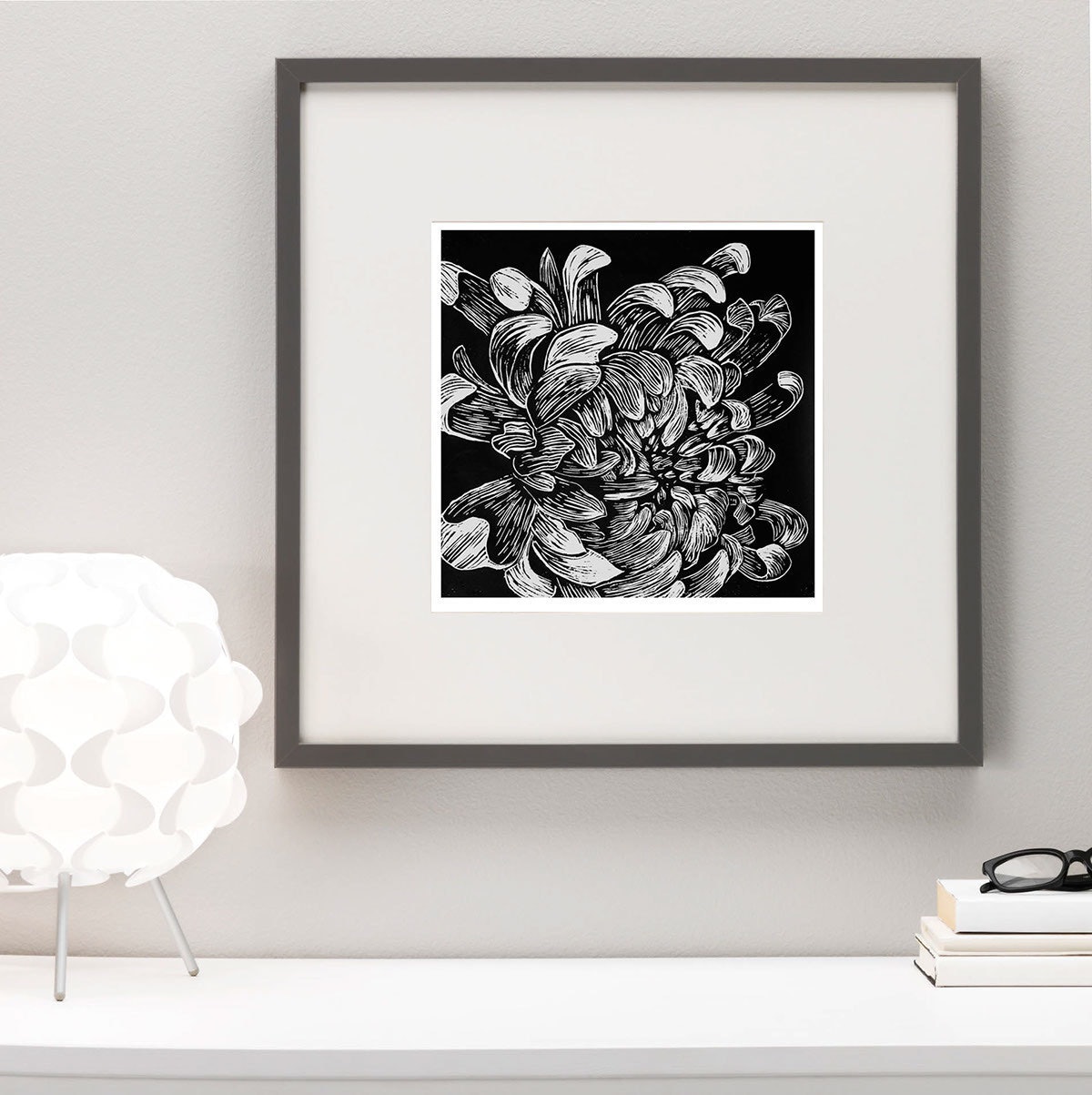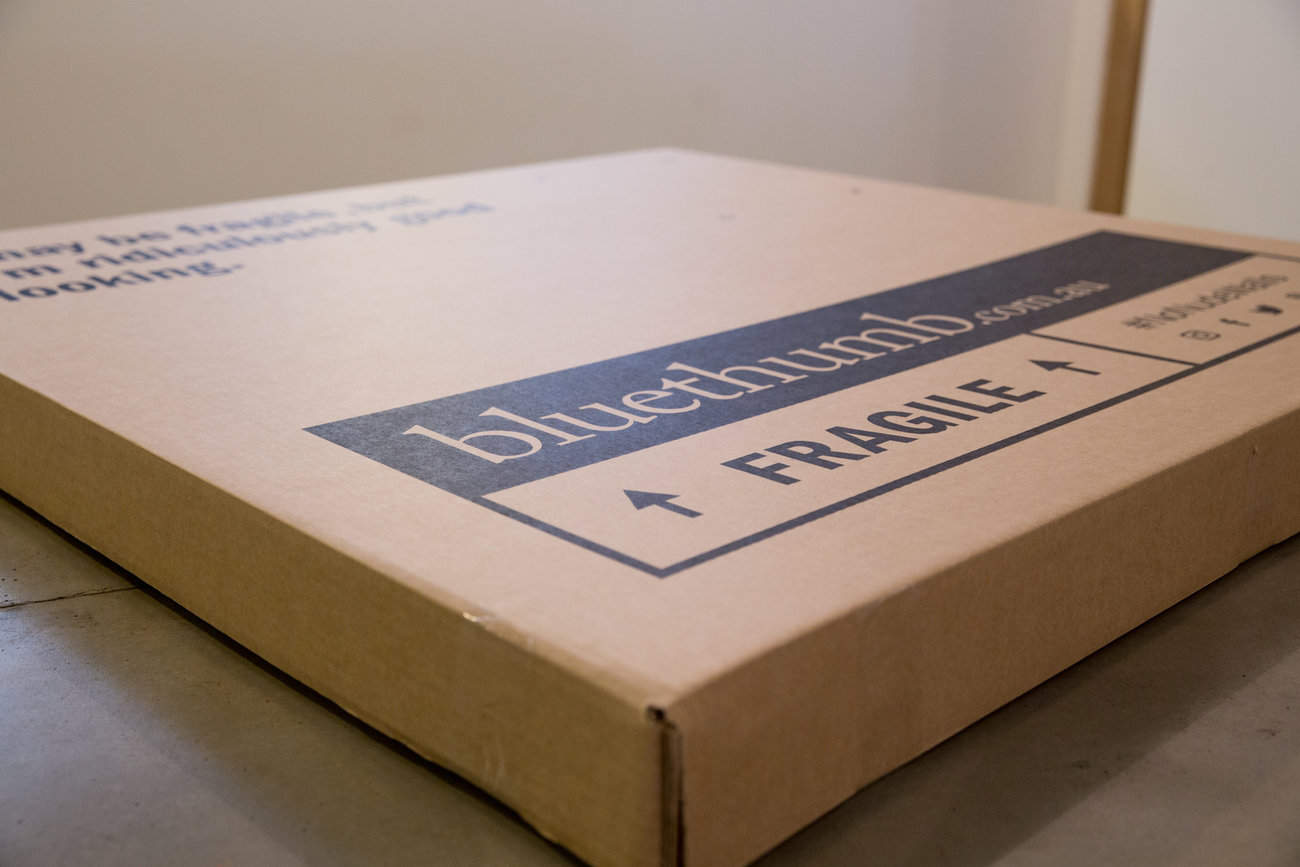How to Sell Your Artwork Framed
Why Sell your Artwork Framed?
The prospect of being able to hang an artwork straight away, rather than having to set time aside to have it framed, can be very attractive to any potential collectors. Commercial buyers such as interior designers particularly value a smooth and easy purchase. If framing your work requires significant time, be sure to account for this in the cost of the work so that you’re not out of pocket.

Our lives are getting more and more busy, so it’s not surprising that the prospect of an artwork arriving already framed can be very attractive.
Types of Frames
When it comes to framing your work, there are a few options you can explore other than the traditional glass-fronted frame. Firstly, you can use a perspex or acrylic frame. These are lighter weight than glass, and also less fragile. Bluethumb artist George Hall started using perspex to frame his works some time ago, and hasn’t looked back since.
“It would take me an hour and a half to pack one artwork when I used to use glass,” says George. “Then I found out about perspex from my framer.”
The only things to be careful of when using perspex, says George, is that it can scratch quite easily and can also become slightly warped. He advises artists to be very careful during the framing and packing processes to avoid scratching as much as possible, and also to purchase the slightly thicker, better quality perspex to avoid any warping of the frame or browning of the piece underneath.
When purchasing the frames, George suggests that artists buy in bulk at wholesale prices, and stick to one colour for all of their pieces.
Another alternative is to frame your work without any cover at all. At our art prize, for example, Uruna Tjina, Hubert Pareroultja‘s watercolour work was framed in a simple wooden frame without any glass. The result was beautiful and allowed the viewer to see the texture and details of the piece more clearly than if it had been covered by glass.
For works on canvas, tray frames are also a great option. They aren’t too fragile to ship, and can really finish off the look of a canvas work.
Packaging Glass

With a bit of extra help, our Bluethumb boxes are the perfect way to ship your artwork, framed or not.
Listing Framed Artworks

Try to show a picture of the frame in your listing – someone might get a shock if their artwork turns up in something gold and ornate.
If you’d like further advising on framing your artwork, just get in touch via help@bluethumb.com.au. We’re happy to help!
















artwork $ 500
Frame $ 200
What will your commission be on artwork or total $700?
Hi Patricia,
Our commission is 30% of the total cost. If you’d like to sell your work pre-framed, then we recommend you build this into the total cost of your piece.
Cheers and hope that helps!
I’m very grateful for all these helpful articles! Thanks so much for all the tips and advice.
Regarding the information relating to dimensions – could you please clarify if the measurements are to include or not include the frame? I’ve done the reverse and listed the overall dimensions including frame in my description only which was how I thought it was meant to be? Thanks in advance!
Hi Rebecca,
We’d recommend listing the overall size including the frame in the listing, and then explaining a little further in the actual description. Just let them know the size of the painting unframed and framed. This way the size is clear to collectors!
Hope this helps.
I am glad that I found this article. I really do have difficulties in selling my artwork. I don’t know if the price I set is suitable to my work. Thank you for sharing this!
i like bluethumb, comments and tips easy to understand – except one…. i dont understand the comment about selling work preframed. Does that mean that you advertise the work at an unframed cost (eg. $100 unframed), but also say how much it would cost if the person chooses to have it framed (e.g. $220 framed)? Would you include extra costs of posting the heavier framed picture inside the stated framed cost? or is shipping mentioned separately?
Hi Merril,
With framed works, many of our artists list the price as including the framing. The shipping cost is added after the price you enter, and will take into account the extra weight and size of the frame according to the dimensions you enter. You can offer the piece at an unframed price if you want, just write the unframed price in the artwork description with a note to enquire with the Bluethumb team, who can make sure that the unframed price goes through for a buyer that chooses that option.
Selling your artwork framed can definitely make or break a piece of art. Good frame makes a big difference that is why it is vital to use a top quality frame. With a little bit of planning, framing can be one of your biggest profit centers!
What would the most popular colour frame be at the moment – and what would the most popular material of Frame be most popular?
Thank you for this article. Ive just posted my first framed painting on my gallery. It really does make the painting so much more cleaner. Fingers crossed I get more reviews and a sale. The articles are fabulous.
Ive just started to get my art paintings framed. They look so much more beautiful and professional. Thank you for the handy tips bluethumb team. Kind regards Sandra Messner.
Thank you so much for this helpful article. I am having trouble selling my artwork , so from now on I am going to frame my work and hopefully this will make a difference.
Thanks for all your helpful hints.
“There’s a few things to take into account when listing framed artworks. First, make sure that both the dimensions and the price are inclusive of the frame.”
All my works are framed. Yet on the listings, they all show up with the unframed dimensions.
What can be done to indicate total dimension including frame on the front listing?